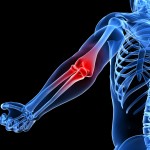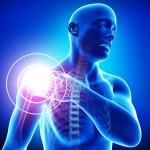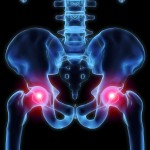Carpal Tunnel Syndrome
What is it:
The Carpal Tunnel is the passage in the wrist created by bones on three sides and ligament on the fourth. Through this tiny space, nine tendons pass, as well as the median nerve. It stands to reason that any inflammation of any sort in the carpal tunnel will cause the median nerve to be compressed. The median nerve goes on to the thumb, forefinger middle finger and ring finger. This is the reason for the burning, tingling feelings and for the numbness and the pain.
Statistics:
“Only 23% of all Carpal Tunnel Syndrome patients were able to return to their previous professions following surgery.” Source: NIOSH
“Carpal tunnel surgery has about a 57% failure rate following patients from 1-day to 6-years. At least one of the following symptoms re-occurred during this time: Pain, Numbness, Tingling sensations.” Source: Nancollas, et al, 1995. J. Hand Surgery.
Steroid (Cortisone) Injection Statistic: Failure rate (Including “partial success” as failure) is 72.6% after 1-year follow up. Source: Irwin, et al. J Hand Surgery.
Important Facts:
The wrist is the slimmest part of the human body. Slim wrists have been considered a sign of beauty for centuries, but people with smaller wrists, it is now known, are at higher risk for CTS.
The carpals are the bones you feel when you touch your wrist. In the wrist is the carpal tunnel, which is enclosed by the carpals on three sides, and on the fourth side, by a transverse carpal ligament. Within this narrow space, is not only the median nerve, but also nine flexor tendons. These tendons help you bend your wrist. As you can imagine, it’s a pretty tight squeeze. If for some reason the carpal tunnel is too small, or if the tendons within the tunnel become larger, your median nerve will be compressed.
Treatment Duration: Some patients have mild problems and can be fixed in 1-4 weeks; others take longer.
How long should recovery from carpal tunnel syndrome take?
Recovery is expected to take about six to eight weeks. Occupational rehabilitation may take an additional month.
Do’s/Don’ts:
Avoid Repetitive Strain Injuries while working at the computer. The best thing you can do is make sure you take adequate breaks. A break every twenty minutes or so can do wonders. This is especially important if you have any tingling or pins and needles sensation in your palm, because these are the first signs of Carpal Tunnel Syndrome.
Common Myths:
Carpal Tunnel Syndrome and Hypothyroidism — Until recently, despite much research on the subject, many doctors and endocrinologists have not been generally aware of the connection between carpal tunnel syndrome (CTS) and hypothyroidism
De Quervain’s
What is it:
It is a form of tendinitis in which the coverings of the tendons that lead from the wrist to the thumb become irritated and cause tenderness and pain in the area. The repetitive action of typing can bring it on, as can activities that involve the gripping of tools – even playing golf.
Statistics:
While anyone can get de Quervain’s, it affects women eight to 10 times more often than men.
Facts:
The Finkelstein test is conducted by making a fist with the fingers closed over the thumb and the wrist is bent toward the little finger.
The Finkelstein test can be quite painful for the person with De Quervain’s tendinitis.
Tenderness directly over the tendons on the thumb side of the wrist is a common finding with this test.
De Quervain’s disease is more likely to occur in women than men and between the ages of 30 and 50 years but anyone at any age can get it. Pregnant women or people with diabetes or rheumatoid arthritis are more likely to get the disease.
Treatment Duration:
Treatment usually involves wearing a splint 24 hours a day for four to six weeks to immobilize the affected area and refraining from any activities that may aggravate the condition.
Do’s/Don’ts:
Thumb pressure in pushing controls or while typing should also be avoided.
Common Myths:
If you suffer from tendonitis, you are likely the recipient of a lot of bad information — not the least of it from your doctor.
This NSAID/rest/cortisone dogma has been repeated to the point that it has assumed the status of fact in everyday life. Unfortunately, tendinopathy resulting from (a) overuse and (b) incorrect patterns of motion generally fails to resolve itself when subjected to treatment regimens that are designed to relieve inflammation.
A tennis player does not experience “tennis elbow” because inflammation suddenly decided to inflict itself upon the athlete’s arm; rather, it is the result of thousands of hours repeating a particular motion with a tennis racket. A bass guitar player suffering from de Quervain’s Syndrome, a bodybuilder whose biceps hurts the list of examples is virtually endless, and in every case the culprit is clearly excessive use of a body part (often coupled with incorrect movement patterns of one type or another).
Fractures
What is it:
Fractures of the hand can occur in either the small bones of the fingers (phalanges) or the long bones (metacarpals). They can result from a twisting injury, a fall, a crush injury, or direct contact in sports.
Scaphoid Fracture Statistics:
Most Common Carpal Fracture (60%) – 11% of all hand fractures. Young Active Males: ages 15-35. Fracture of the metacarpals and phalanges comprises approximately 10% of all fractures. Metacarpal fractures account for 30-40% of all hand fractures; fractures of the first and fifth metacarpals are the most frequent. Fractures of the fifth metacarpal neck (boxer fractures) alone account for 10% of all fractures of the hand.
Important Facts:
Boxer’s fracture refers to a fracture (break) of the 5th metacarpal that is the hand bone connected to the small finger. It often happens from punching a solid object, hence its name. This injury leads to pain and swelling over the broken bone.The vast majority of boxer’s fractures can be treated without surgery.Some fractures will do better with a ‘closed reduction’, where the fracture is ‘set’.
Treatment Duration:
Most of the time, the bones can be realigned by manipulating them without surgery. A cast, splint or fracture-brace is applied to immobilize the bones and hold them in place. The cast will probably extend from the fingertips down past the wrist almost to the elbow. This ensures that the bones remain fixed in place.A second set of X-rays will probably be needed about a week later. These X-rays are used to ensure that the bones have remained in the proper position.The cast will be worn for three to six weeks. Gentle hand exercises can probably be started after three weeks. Afterward, the finger may be slightly shorter, but this should not affect the ability to use the hand and fingers.
Do’s/Don’ts:
First, keep your arm elevated. If your arm is below the level of your heart, it will hurt more. Keep it up, at shoulder level or higher. Prop it up with a pillow when you are sitting or lying down, hold it up when you are standing. Don’t use a sling, as this puts your arm below the level of your heart. Don’t pick at the cast padding. It will pull out from inside the splint or cast and then it will not be adequately padded.
Common Myths:
MYTH: “If you can move it, it can’t be broken.” Only an x-ray can detect a fracture, so don’t delay!
Consult a Physician if a joint is swollen, painful, unusually mobile, and unstable or won’t move normally.
Fractures inside a joint often require surgery and can have very poor results with irreversible complications if treatment is delayed.





